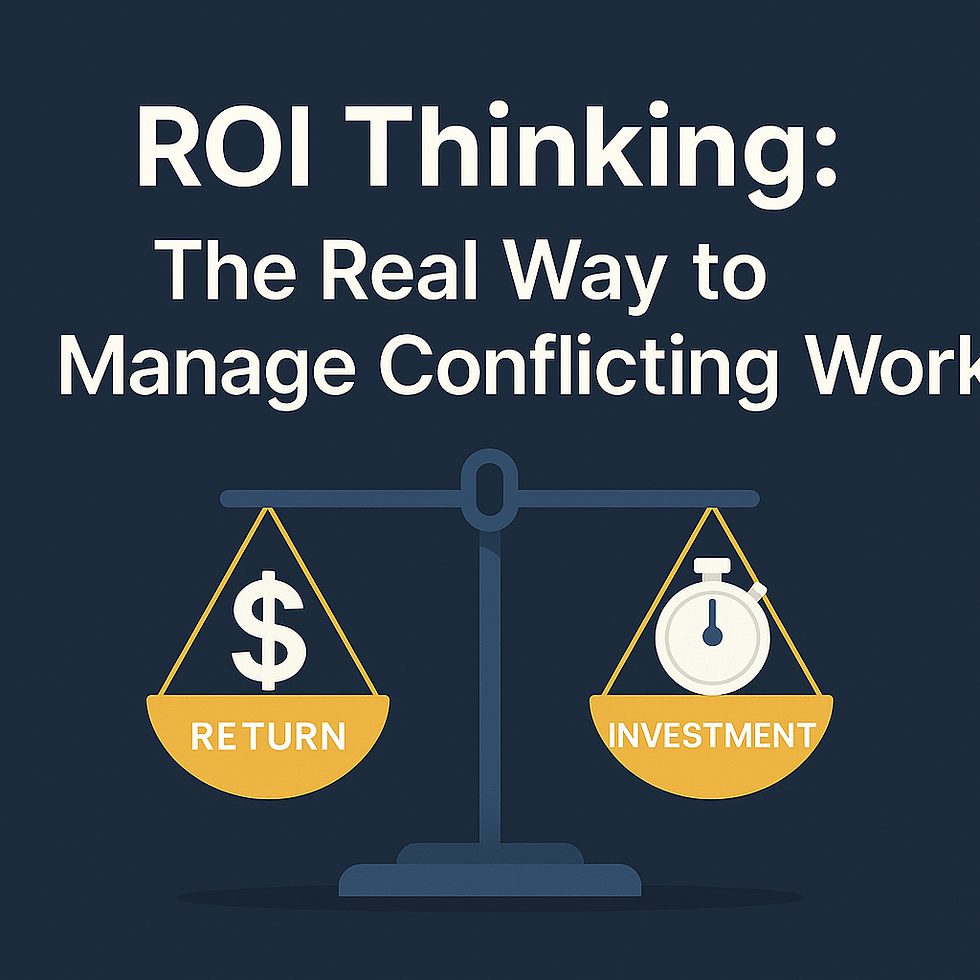Obsession of Business Value over Technical Perfection
- Admin
- Apr 15
- 3 min read
Updated: Apr 25

We’re told to be proactive. To clean up tech debt. To follow best practices.But what if that instinct—to perfect the system technically—is exactly what’s holding us back?
I want to make a bold claim:
Most tech debt tasks are zero or negative-value unless business is explicitly asking for them.
That’s right. Refactoring a trigger framework. Improving SOQL queries performance. Should we switch to FFLIB framework for better design of applications.
These are not bad ideas. But without the context of business urgency, they become distractions.
Engineering Sits Inside the Business, Not Beside It
And yet, we often act like we’re the business. We hold technical ceremonies. We attend Dreamforce, TrailblazerDX, Copado conferences. But ask yourself: When was the last time you sat in a sales review? Or listened to customer support for an hour?
We optimize systems. They optimize revenue.Our obsession must be to deliver value—not elegance.
Time = Value. Calibrate Accordingly
Every task you pick, every story you point, must pass one filter:
Does this time investment return real value—today or very soon—for someone in the business?
And that’s especially true during lean weeks.When there’s little work coming in from business, engineers default to the comfort zone—tech debt, refactoring, framework redesign.
Don’t.
Instead:
Hunt for automation opportunities inside the business.
Shadow a product manager for half a day.
Ask: “What’s frustrating you today? What slows you down?”
Ask: “What’s your Salesforce day look like?”
That’s proactive.Not refactoring for the sake of it.
And then go solve that.
Engineering Preparedness: The Only Tech Investment That Pays Without Being Asked
There is an exception—an area where engineers must act without waiting:
Readiness infrastructure.
This includes:
Solid CI/CD pipelines
Clear branching and release strategy
Robust test suites (including mocks, TDD, regression coverage)
Thoughtful change management
Lightweight training artifacts
Tools for automated validation and safe rollback
These aren’t “tech debt.” These are multipliers.They allow you to respond to business urgency with agility, speed, and safety.
And they are the difference between an engineering team that codes vs one that compounds value.
If you're serious about being agile, about responding fast to real business needs, this is your foundation. Don't wait for permission. Build it now.
The Value-First Engineering Framework
Don’t touch tech debt unless the business screams. Page is slow? Wait for real user pain, not synthetic scores.
Don’t chase perfection.One-trigger-per-object works just fine. Unless proven otherwise, don’t abstract.
Build frameworks only when they’re reused frequently.Your one-off wrapper around batch chaining isn’t helping if it’s only used once.
Invest in readiness—CI/CD, test automation, change playbooks. Because business agility is your responsibility, not their ask.
The Prioritization Grid
Time to Deliver | Value Returned | Action |
Low | High | ✅ Do now – Quick, compounding wins |
High | High | 🔍 Plan and prioritize – Core features, infra multipliers |
Low | Low | ⚠️ Avoid – These are time-fillers |
High | Low | ❌ Danger zone – Where most technical perfection hides |
Engineers Must Lead with Curiosity, Not Assumptions
You don’t know your business until you’ve sat with it. Until you’ve listened. Until you’ve seen firsthand what Salesforce means—or doesn’t mean—in their day.
Keep asking. Keep observing.Because when you align time with real value, you’re not just writing better code.
You’re compounding trust, velocity, and business impact.
And that’s the only obsession worth having.



Comments